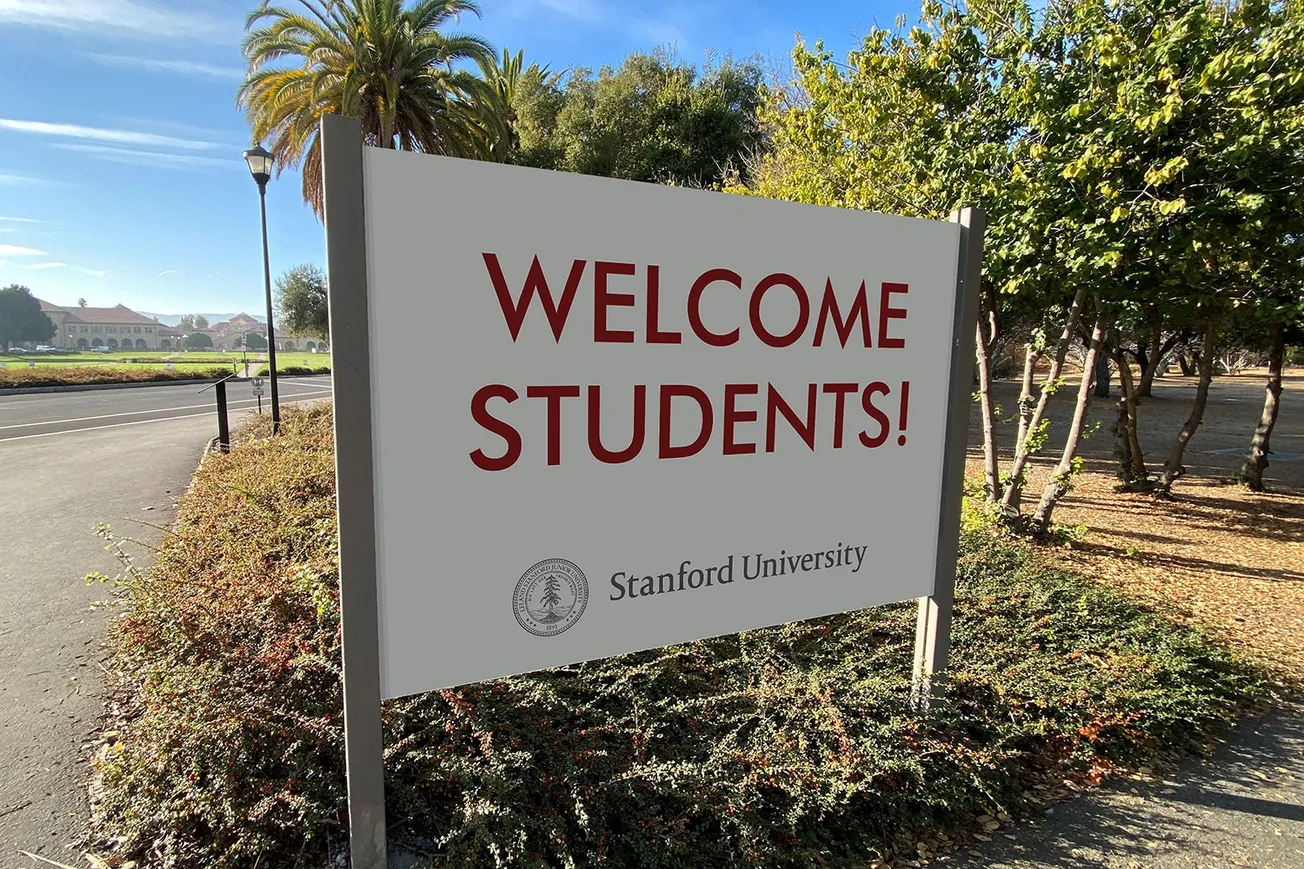Table of Contents
Last week, California Gov. Newson signed legislation banning legacy and donor preferences for all private colleges in the state, including Stanford and USC. As justification, he triumphantly declared: “In California, everyone should be able to get ahead through merit, skill, and hard work.”
Compelling reasoning indeed. Legacy is elitist. Legacy is unfair. Legacy is blatantly, on-its-face unmeritocratic.
And yet, legacy is a key engine of American meritocracy. For it furnishes the financial and social resources that integrate meritorious non-elites into the elite. Therefore, outlawing the practice is a monumental blunder, one that moves America towards a more unmeritocratic elite, a more unfair system, and a more dysfunctional society.
Let me explain.
Three years ago, when I was applying to colleges, I would have applauded Newsom’s move. I’m not a legacy, and my parents can’t buy a building for me. In a hypercompetitive admissions environment - my year, Stanford rejected 26 students for each student it accepted - I resented a system that made non-legacy applicants work extra to overcome the fact that their parents weren’t alums or tycoons.
Like most anti-legacy advocates, I saw the practice as an outdated hereditary peerage, a dangerous distraction from selecting the most meritorious generation of future leaders.
But this view fundamentally misunderstands the purpose of elite colleges. It imagines that mere acceptance into a top institution will magically transform any student into a future leader, as if admissions officers can wave their hands and create new elites through selection alone.
Rather, the truth is that America is, has always been, and will always be a partial meritocracy. American capital is concentrated in a handful of elites - 0.1% of Americans own almost one-seventh of its wealth - and these elites hold durable, transgenerational power and wealth - up to 80% of elite wealth may stem from inheritance.
In this, America is far from alone; across history, entrenched elite power is inevitable. Even so-called “meritocracies” like Qing China, which relied on standardized testing, rapidly collapsed into endemic corruption and nepotism - to say nothing of openly anti-meritocratic societies like feudal Europe or the caste system.
The purpose of college admissions isn’t to create a new elite from scratch. It’s to meld meritorious non-elites with the existing elite, to incorporate fresh talent and ideas into the highest echelons of power. It should be a win-win-win: established elites benefit from new merit, new merit benefits from elite connections and resources, and society benefits from a more meritocratic elite. Legacy admissions is a prerequisite for this mission statement, because you can’t meld together two groups if one of them is missing.
After all, eliminating legacy admissions certainly won’t dismantle the influence of entrenched elites. What it does do, however, is push elites out of top higher education. In the six years after Johns Hopkins eliminated legacy preference, for example, the proportion of legacy admits was quartered, falling from 12.5% to 3.5%.
And a diminishing legacy presence on campus harms the bootstrapping Americans it’s supposed to help. Because while a few more spots might open up for meritorious non-elites, all admits will be starved of the resources and connections needed to succeed.
One aspect is purely financial. Legacy admits skew wealthier, and, unsurprisingly, donate more often and more generously to their alma maters. These donations chiefly benefit everyone else, funding state-of-the-art facilities, academics, research opportunities, and financial aid programs far beyond what they could otherwise afford. Almost half of Harvard’s revenue, for example, comes from donations. Tuition is barely affordable now; just imagine when it doubles.
Some studies suggest that nullifying legacy preference doesn’t drastically decrease donations. Yet by also banning donor preferences, critics of legacy admissions have also choked off colleges’ other reliable fundraising channel. (Anti-legacy legislation, from California to Virginia, almost always bans donor preferences as well.) After all, parents of soon-to-apply high schoolers don’t buy buildings for fun. Critics also argue, rather myopically, that universities’ large endowments would compensate for any shortfall. With many college endowments facing subpar returns, these funds won’t be able to cover ballooning costs without a steady influx of fresh donations.
Far more important than financial statements is the network that legacy admissions sustains. There’s a reason the trite and somewhat overstated expression - “it’s who you know, not what you know” - is so popular. And there’s a reason why alumni overwhelmingly cite “the people” as the most valuable part of their college experience. As if by osmosis, meritorious non-elites benefit immeasurably from rubbing shoulders with America’s political, financial, and cultural elites - whom legacy preference ensures have a place on campus.
Legacy admissions don’t just create networking opportunities during college. They also create structural incentives for accomplished alumni to participate in the community long after graduation, offering guidance, recruiting students, and advising younger alumni. While legacy status gives applicants an automatic boost, it also encourages alumni to contribute more to the college community - conducting interviews, mentoring students, investing in the university - as their additional effort further enhances their children’s admissions chances.
Recent research, by none other than Stanford’s Raj Chetty (now at Harvard), quantifies these networks’ importance. He finds that connections to wealth and power are the single largest exponent of upward mobility, and that these social ties can even be stronger predictors of success than inherited wealth. The only force strong enough to surmount the pedigree of birth, it seems, is exposure to that pedigree.
Critics of legacy admissions ignore the key reality of human history: that the existing elite is almost always deeply entrenched, and breaking into it requires more than just individual talent - it requires access. And this is where legacy admissions play their most crucial role: by enabling meritorious non-elites to mix with the existing elite, they open up the real opportunity for upward mobility. Ironically, the president of Johns Hopkins gave the most eloquent defense of legacy admissions precisely when justifying its removal: “liberal-democratic societies make a compact with their citizens that anyone with enough grit and talent can move beyond the confines of the class into which they were born and live a better life than their parents.”
This isn’t hypothetical. Just look to MIT, arguably the most meritocratic school in the country. It trounces Stanford and Harvard in metrics like SAT scores. Yet even when it comes to producing unicorn founders - which engineering-focused MIT should excel at - it lags behind, to say nothing of fostering cultural icons or political leaders. MIT shines in producing Jane Street quants and discovering new matrix decompositions, but falls short in translating that brilliance into broader societal impact. By contrast, peer institutions, with their strong legacy networks, unsurprisingly outperform across the board.
Merit plus connections beats out merit alone.
And legacy’s benefits come at a pretty low cost. Sure, legacy preference probably slightly diminishes the concentration of raw talent at top universities, but not by much. Studies show that legacy admits are, on average, still highly qualified relative to the general applicant pool. When ranking merit is so inherently difficult, when colleges have enough qualified applicants to fill their classes many times over, when even a small whim, like an admissions officers’ stomachache, can cause hundreds of students to be rejected, it’s hard to argue that a few seats allocated to legacies meaningfully dents the overall talent pool.
What legacy preference does require, however, is fighting for what is fair instead of what feels fair. Because what’s truly unfair for meritorious high schoolers - still children - is to dangle the promise of astronomical success; pressure them into academic perfectionism, endless extracurriculars, all-nighters, anxiety, depression; give them the admissions letter they craved; only to then deny them access to the levers of power needed to improve the world and carve their legacy into history.
Even if students somehow set aside their ambition and grow content with cushy jobs - like quant trading - they could’ve anyway earned on their own merit, those occupations still represent a generation of missed potential. A world without legacy admissions is still a world of talent woefully underutilized. That’s an injustice, perpetrated not only against meritorious non-elites, but against the society that pours prestige and tax breaks into elite institutions and rightfully expects something in return.
Elite colleges need legacy preference to accomplish their true purpose: joining new merit to old elites. To attack this process - just to open up a few hundred spots for non-elites at places like Stanford - isn’t just an injustice against those meritorious students. It does a disservice to society as a whole. And, if history is any guide, it’s a secular folly.





